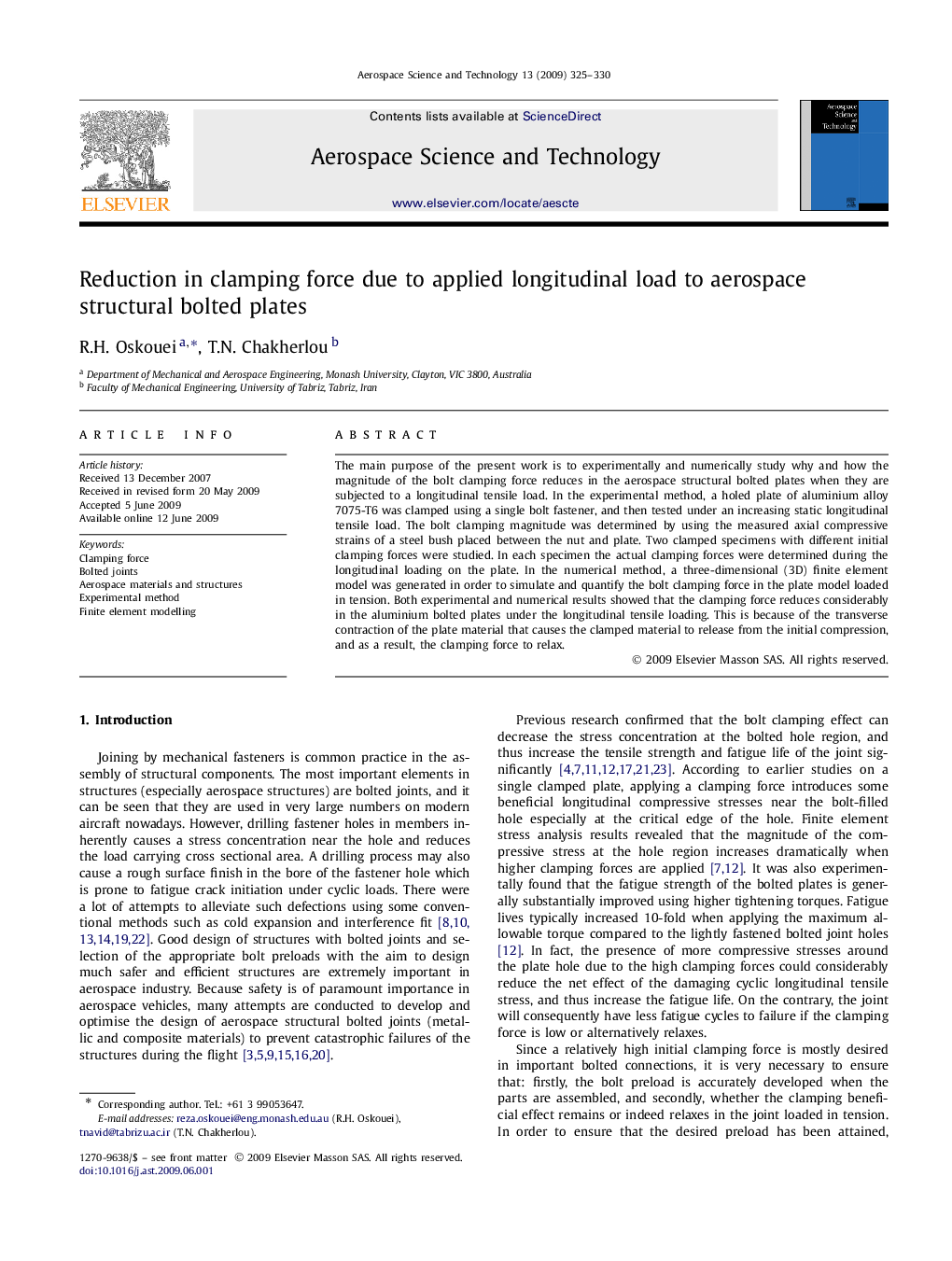| Article ID | Journal | Published Year | Pages | File Type |
|---|---|---|---|---|
| 1718759 | Aerospace Science and Technology | 2009 | 6 Pages |
The main purpose of the present work is to experimentally and numerically study why and how the magnitude of the bolt clamping force reduces in the aerospace structural bolted plates when they are subjected to a longitudinal tensile load. In the experimental method, a holed plate of aluminium alloy 7075-T6 was clamped using a single bolt fastener, and then tested under an increasing static longitudinal tensile load. The bolt clamping magnitude was determined by using the measured axial compressive strains of a steel bush placed between the nut and plate. Two clamped specimens with different initial clamping forces were studied. In each specimen the actual clamping forces were determined during the longitudinal loading on the plate. In the numerical method, a three-dimensional (3D) finite element model was generated in order to simulate and quantify the bolt clamping force in the plate model loaded in tension. Both experimental and numerical results showed that the clamping force reduces considerably in the aluminium bolted plates under the longitudinal tensile loading. This is because of the transverse contraction of the plate material that causes the clamped material to release from the initial compression, and as a result, the clamping force to relax.
